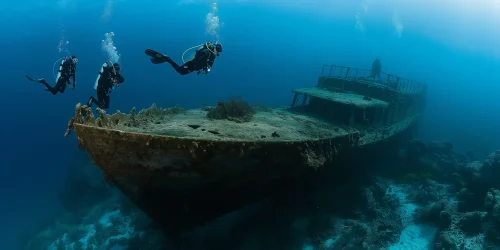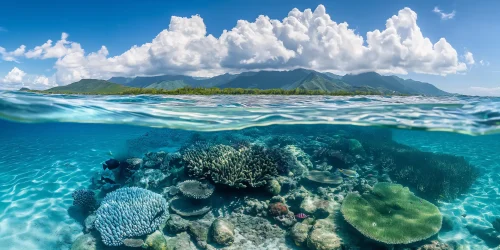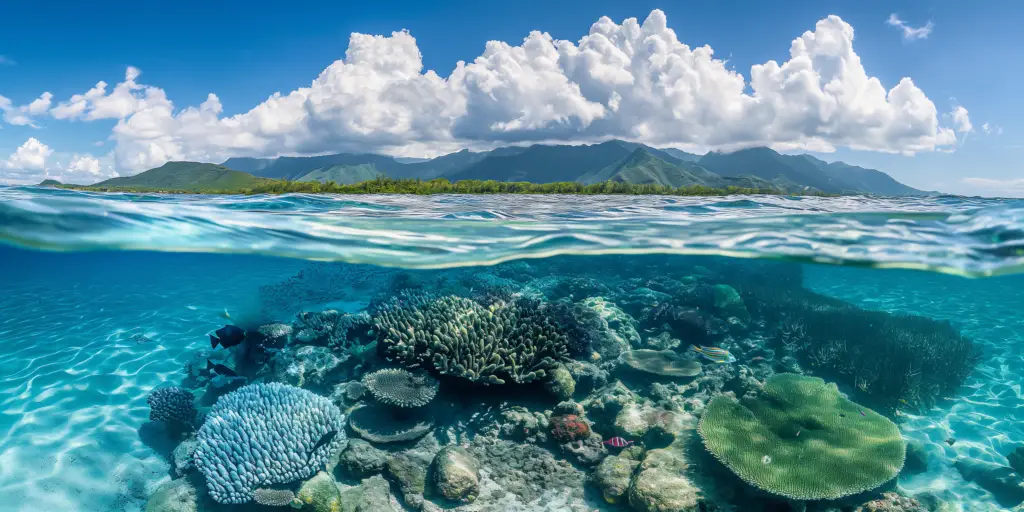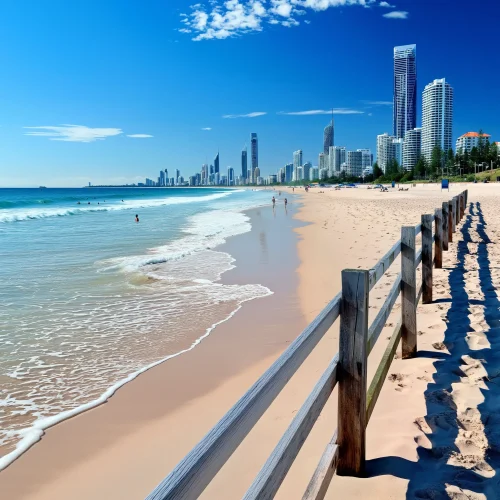Stretching over 2,300 kilometers off the coast of Queensland, Australia, the Great Barrier Reef is the world’s largest coral reef system and a UNESCO World Heritage site. Comprising more than 2,900 individual reefs and 900 islands, it is a natural wonder renowned for its stunning biodiversity and ecological significance. This article delves into the reef’s history, importance, and the myriad ways to experience its beauty, alongside exploring critical topics such as climate change, conservation efforts, and the cultural significance to Indigenous Australians.
History and Importance
The Great Barrier Reef’s formation dates back approximately 20 million years, with the current reef structure believed to be around 6,000 to 8,000 years old. Over millennia, it has evolved into a complex and vibrant ecosystem, supporting a diverse array of marine life. This evolutionary history underscores the reef’s role as a cradle of marine biodiversity and a critical component of the oceanic environment.
The reef is home to over 1,500 species of fish, 400 species of coral, and numerous species of sharks, rays, and other marine creatures. This incredible diversity makes it one of the most biologically rich ecosystems on the planet. The Great Barrier Reef acts as a natural barrier, protecting the coast from the impact of tropical storms and erosion. It also contributes to carbon and nitrogen fixing and plays a pivotal role in nutrient recycling within the marine ecosystem. For Indigenous Australian communities, the reef holds profound cultural and spiritual significance. It features prominently in Aboriginal and Torres Strait Islander traditions, practices, and lore, reflecting a deep connection with this natural wonder.
Visiting the Reef
Tourism, fishing, and scientific research related to the reef generate billions in revenue for Australia. It attracts millions of visitors annually, making it a cornerstone of the local and national economy. Exploring the Great Barrier Reef offers numerous options, from luxury cruises to budget-friendly day trips. Popular starting points include Cairns, Port Douglas, and the Whitsunday Islands.
Snorkeling and diving provide close-up views of the vibrant marine life and coral formations, catering to all skill levels. Glass-bottom boat tours are ideal for those who prefer to stay dry while still experiencing the underwater beauty. Helicopter and seaplane tours offer breathtaking aerial views of the reef, highlighting its vast expanse and intricate patterns. Visiting islands like Hamilton Island, Heron Island, and Lizard Island provides unique experiences, from luxury resorts to eco-friendly accommodations. Additionally, marine biologist-led tours offer deeper insights into the reef’s ecology and the challenges it faces.
Visitors to the reef can explore vibrant coral gardens showcasing a myriad of colors and structures, iconic species such as clownfish, sea turtles, giant clams, and various sharks and rays. Depending on the season, they might also spot humpback whales, dwarf minke whales, and various dolphin species. The Great Barrier Reef Marine Park offers some of the most pristine and well-preserved parts of the reef, while historical shipwrecks have become artificial reefs teeming with life.
Environmental Challenges and Conservation
Coral bleaching occurs when corals expel the algae living in their tissues due to stress caused by changes in temperature, light, or nutrients. Rising sea temperatures, ocean acidification, and severe weather events significantly contribute to coral bleaching, threatening the reef’s health and biodiversity. Major bleaching events in 1998, 2002, 2016, and 2020 have had devastating effects on the reef, leading to widespread coral mortality and long-term damage to the ecosystem. Beyond climate change, pollution from agricultural runoff, plastics, and other sources poses significant threats to reef health. Overfishing affects fish populations and disrupts the reef’s ecological balance, highlighting the need for sustainable fishing practices. Outbreaks of the coral-eating Crown-of-Thorns Starfish are controlled through targeted measures to protect coral cover and reef health.
To combat these threats, the Great Barrier Reef Marine Park Authority employs zoning plans to protect different areas, balancing conservation and sustainable use. Initiatives like coral gardening, artificial reefs, and genetic research aim to enhance coral resilience and facilitate reef restoration. Australia’s commitment to global agreements such as the Paris Agreement underscores efforts to reduce carbon emissions and mitigate the impacts of climate change on the reef.
Cultural Significance and Community Involvement
Indigenous Australians have managed and interacted with the reef for thousands of years, using traditional knowledge to maintain its health and biodiversity. The reef is integral to Aboriginal and Torres Strait Islander traditions, ceremonies, and storytelling, reflecting a deep cultural connection. Partnerships between Indigenous communities and government agencies in managing the reef’s resources and conservation efforts highlight the importance of cultural heritage in modern conservation.
Organizations like the Australian Institute of Marine Science (AIMS) and James Cook University lead cutting-edge research on the reef’s ecology and conservation. New species, underwater features, and ecological phenomena continue to be discovered, advancing our understanding of the reef’s complexity. Technological innovations such as drones, underwater robots, and satellite imaging play vital roles in reef monitoring and research, offering new ways to study and protect the reef.
Public awareness campaigns aim to raise awareness about the importance and challenges of the Great Barrier Reef, engaging the public in conservation efforts. Educational programs foster a new generation of marine scientists and conservationists, emphasizing the reef’s ecological significance. Citizen science projects invite public participation in scientific research and conservation, enhancing collective efforts to protect the reef.
The Great Barrier Reef has inspired countless artists, writers, and filmmakers, capturing its beauty and significance in various forms of expression. Festivals, exhibitions, and cultural events celebrate the reef, promoting its importance and fostering a sense of collective responsibility for its preservation.
Conclusion
In conclusion, the Great Barrier Reef is a natural marvel offering unparalleled experiences and holding immense ecological, cultural, and economic significance. By understanding its history, challenges, and the efforts to protect it, we can appreciate one of Earth’s most magnificent ecosystems and contribute to its preservation for future generations. Through responsible tourism, scientific research, and conservation initiatives, we can ensure that the Great Barrier Reef remains a vibrant and thriving testament to the beauty and diversity of our planet.












